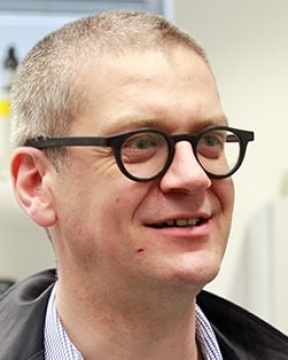 |
Prof. Christophe CoperetETH ZurichInterfaces And Nanoalloys: Formation, Dynamics And Relevance In Catalysis Kanatzidis International Symposium (4th Intl. Symp. on Materials/Solid State Chemistry and Nanoscience for Sustainable Development) Back to Plenary Lectures » |
Abstract:Most large-scale industrial processes rely on heterogeneous catalysts. Among them, supported nanoparticles represent one of the largest classes, for which the desired catalytic performances (activity, selectivity and stability) often relate to specific combination of metals, additives (promoters/poisons) and supports. The complexity of these multicomponent materials often relates to the use of conventional preparation methods in water, associated dissolution/precipitation processes. They thus raise numerous questions on the role of each components, and in particular on the role of specific compositions, interfaces and alloying in driving catalytic properties. In this context, our group has developed synthetic methodologies to control the generation of active sites thanks to the concept of surface organometallic chemistry (SOMC). SOMC is anchored on molecular principles with the goal to understand the surface chemistry at a molecular level. It typically relies on controlling the density of functional groups like surface OH groups in oxide materials, grafting molecular precursor to generate isolated metal sites, following in many instances by a thermal treatment that removes the remaining ligands. This approach has been very successful in generating so-called single-site catalysts; it has also recently been shown to grow, in a controlled manner, nanoparticles with tailored compositions, small and nanoparticle size distribution, interfaces, and even alloying. Furthermore, these SOMC catalysts are specifically aimable to detailed characterization and operando spectroscopy, hence the possibility to derive structure-activity relationships.[1] This lecture focuses on showing how SOMC combined with state-of-the-art Operando spectroscopies, in particular based on X-Ray Absorption (XAS) and IR, augmented with computational modelling enable to understand the structure and the dynamics of active sites. The lecture will illustrate in particular how interfaces and/or alloys in nanoparticles are created and how these specific sites/interfaces evolve under reaction conditions and contributes to the catalytic events. This lecture will focus on two specific catalytic processes, namely propane dehydrogenation and CO2 hydrogenation,[2] which are two key industrial processes relevant to current and emerging strategies. Overall, this lecture highlights how interfaces, alloying and dynamics are driving the catalytic performances and how one need to revisit (open) our views on active sites in heterogeneous catalysis. |
|